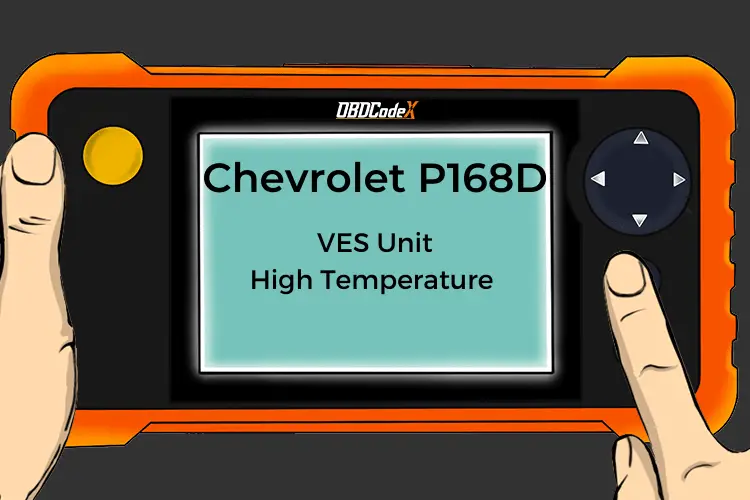P0049: Turbocharger/Supercharger Turbine Overspeed
Is your scanner showing P0049?
No worries. We'll show you what it means and how to deal with it.
P0049: Turbocharger/Supercharger Turbine Overspeed
OVERVIEWWhat Does The P0049 Code Mean?
If you have encountered a code P0049 in an OBD-II equipped vehicle, it indicates that the powertrain control module (PCM) has detected a turbocharger or supercharger turbine overspeed condition. This code could be attributed to a mechanical or an electrical malfunction in the forced air induction (FAI) system.
As forced air induction systems, turbochargers and superchargers are both used to increase engine performance. By design, ambient air is drawn into each type of device, which then compresses the air and forces it into the engine combustion chambers. The method in which they are driven is the most significant difference between the turbocharger and supercharger.
While the supercharger is driven by a belt that runs off the engine crankshaft, the turbocharger is driven by engine exhaust. In order to make the air that is introduced to the engine even cooler and denser, FAI systems often use some type of intercooler. A methanol or cold water injection may also be utilized for this purpose.
The boost controller is usually an integrated part of the PCM. Data from engine and transmission sensors is calculated by the PCM to determine the degree of boost pressure required for the engine to perform at an optimum level. To determine whether or not boost pressure meets desired levels, it is monitored (by the PCM) using one or more boost pressure sensors.
The PCM compares actual boost pressure with desired boost pressure and activates bypass control valves and/or blow-off valves (as required) to prevent an overboost condition.
Most bypass control valves and blow-off valves are actuated electronically. Prior to attempting a diagnosis for a code P0049, consult a reliable vehicle information source (such as All Data DIY) for information regarding the forced air induction control system for your vehicle.
If the PCM detects a level of boost pressure that is higher than the programmed limit, a code P0049 will be stored and a malfunction indicator lamp (MIL) may be illuminated.
Related turbo / supercharger engine trouble codes:
- P0045 Turbocharger/Supercharger Boost Control “A” Circuit/Open
- P0046 Turbocharger/Supercharger Boost Control “A” Circuit Range/Performance
- P0047 Turbocharger/Supercharger Boost Control “A” Circuit Low
- P0048 Turbocharger/Supercharger Boost Control “A” Circuit High
What Are The Symptoms Of The P0049 Code?
Symptoms of a P0049 code may include:
- Loud noises from the wastegate and/or hoses especially under acceleration
- Thick black smoke from the exhaust
- Higher engine and/or transmission temperatures
- Spark detonation is possible due to elevated cylinder temperature
- Fouled spark plugs
- Additional codes may also be stored, including other turbocharger boost related codes, knock sensor codes, or engine misfire codes
What Are The Potential Causes Of The P0049 Code?
Potential causes for this code to set are:
- Faulty boost pressure sensor
- Bad turbocharger bypass valve, wastegate, or blow-off valve
- Mechanical turbocharger/supercharger failure
- Disconnected, cracked, or collapsed vacuum lines (vacuum actuated bypass valve)
- Disconnected or damaged turbocharger hoses
- Loose, corroded, or disconnected electrical connectors in boost pressure sensor circuits
- Defective PCM, boost controller, or PCM programming error
How Serious Is This P0049 Code?
A genuine turbocharger/supercharger overboost condition could result in severe FAI device and/or engine damage therefore a stored code P0049 should be treated as severe.
How Can You Fix The P0049 Code?
A good starting point is always to check for technical service bulletins (TSB) for your particular vehicle. Your issue may be a known issue with a known fix put out by the manufacturer and can save you time and money during diagnosis.
A diagnostic scanner, a digital volt/ohmmeter (DVOM), a reliable vehicle information source (like All Data DIY), and a manual boost pressure gauge will be necessary to diagnose a code P0049.
I like to begin with a thorough inspection of all wiring, turbocharger supply hoses, and vacuum hoses related to the turbocharger and boost control system, when attempting to diagnose a P0049.
Next, I’d continue by connecting the scanner to the vehicle diagnostic connector and retrieving all stored trouble codes. Writing the codes (and pertinent freeze frame data) down may prove helpful later in your diagnosis.
After that, clear the codes and test drive the vehicle (if possible) and see if the code is reset. Should the code immediately reset, execute a manual boost pressure test and compare actual findings with manufacturer’s specifications. If actual boost pressure exceeds maximum requirements, suspect a problem in the bypass control system or outlet piping system.
Normal boost pressure for modern forced air induction systems is between nine and fourteen-pounds.
If actual boost pressure is within manufacturer’s specifications, suspect a defective boost pressure sensor, a bad PCM, or a PCM programming error. Use the DVOM and your vehicle information source to test the boost pressure sensor and system circuits as needed.
Recommended Parts
Below are some recommended auto parts to help you address the trouble code affecting your vehicle and get it running smoothly again:
>>> MAP Sensor
>>> Turbocharger
>>> WORKPRO 582-piece Crimp Terminals, Wire Connectors, Heat Shrink Tube, Electrical Repair Kit
>>> Dorman 86689C 399 PC Automotive Electrical Repair Kit
>>> ECU
>>> LAUNCH X431 PROS V+ Elite Bidirectional Scan Tool
Note: During the purchasing process, please check carefully whether the part you want to buy fits your car!
Reference Sources
P0049: Turbo / Supercharger Turbine Overspeed, OBD-Codes.




